Of the more than 300 temples in Chiang Mai, Wat Phra Singh is one of the largest, best-known, most beautiful, and most photogenic. It also holds royal temple status, granted by King Ananda Mahidol in 1935—so it’s no surprise that the site is always popular among tourists visiting Thailand.
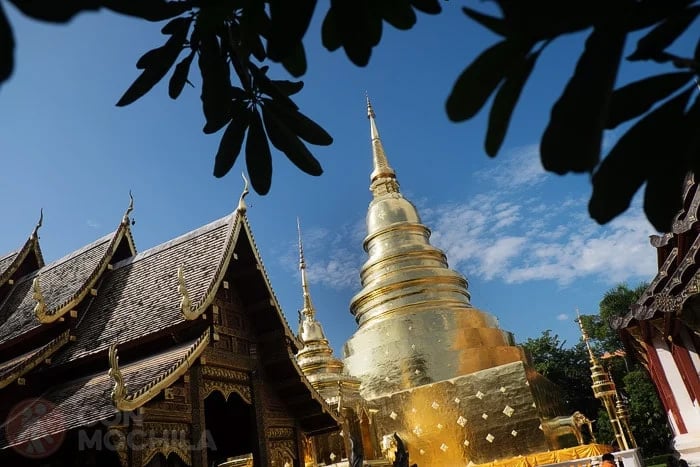
Located on the western side of the old city center—right along the bustling Ratchadamnoen Road, where the Sunday Night Market takes place—Wat Phra Singh’s most striking feature is arguably its enormous golden stupa, which stands out prominently among the temple complex’s buildings.
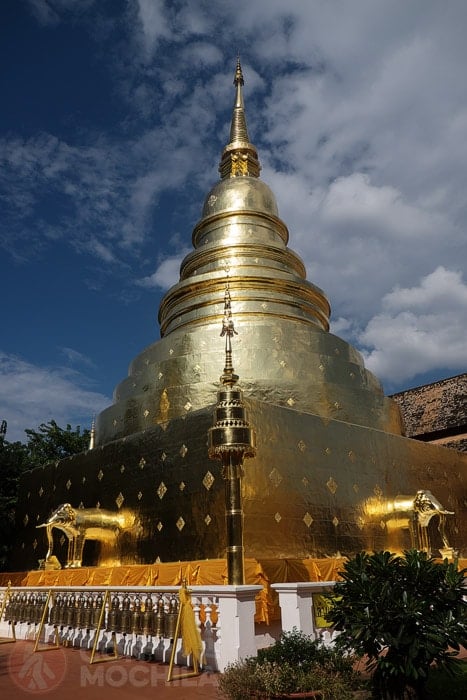
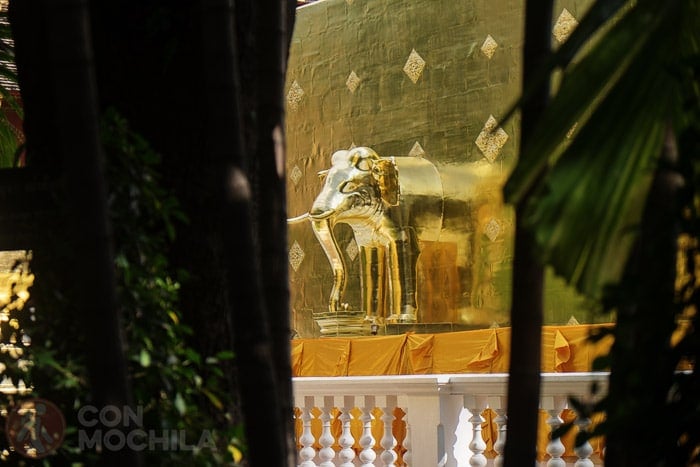
However, the star of the story here is a revered image of the Buddha known as Phra Buddha Sihing. According to legend, its origins trace back to India. After traveling through places like Ceylon and Ayutthaya, the image eventually made its way to Chiang Mai.
Although it has undergone several renovations and additions over the centuries, Wat Phra Singh began construction in 1345, when King Phayu built a chedi to enshrine the ashes of his father, King Kham Fu. At that time, it was known as Wat Lichiang Phra, until the arrival of the Buddha image.
Today, the temple complex features several buildings: a couple of viharns, a golden stupa or chedi, a ubosot, a monks’ school, and a library.
The Viharn Luang is the first building that greets you at the entrance. It’s not the original structure, the current version dates from 1925.
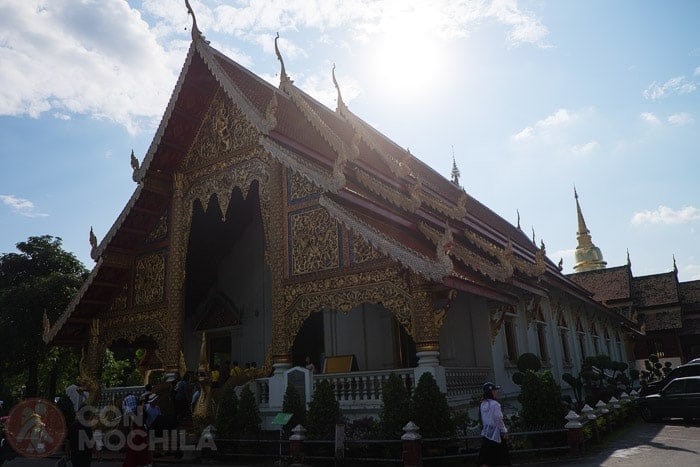
In the photo below, to the left, is the Viharn Lai Kham, a prime example of traditional Lanna architecture and the current home of the Buddha image. Its interior walls are covered with murals depicting stories like Sangthong and other Northern Thai folktales. On the far right, you’ll see the ubosot, or ordination hall.
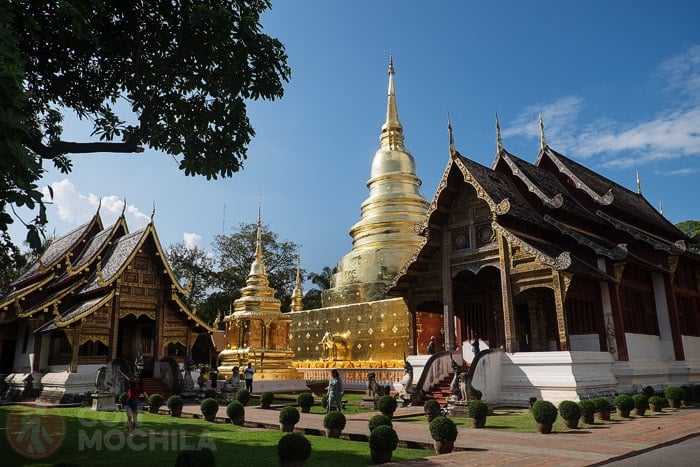
Curiously, if you look up older photos of this same view online, from before the restoration, you’ll see a very different temple: the chedis were white, and the ubosot was wooden and unpainted. It almost looks like an entirely different place.
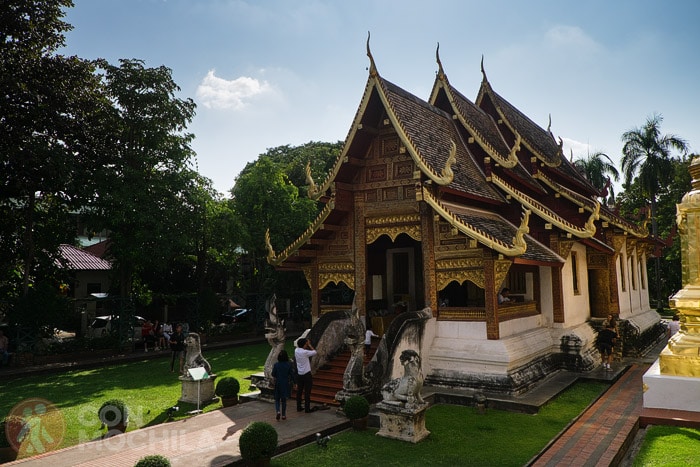
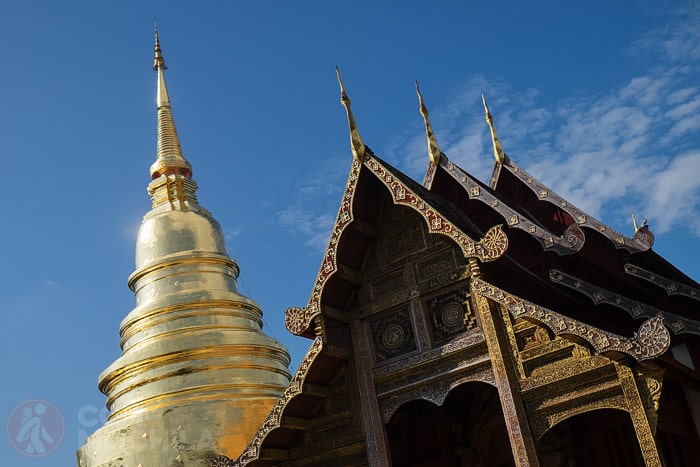
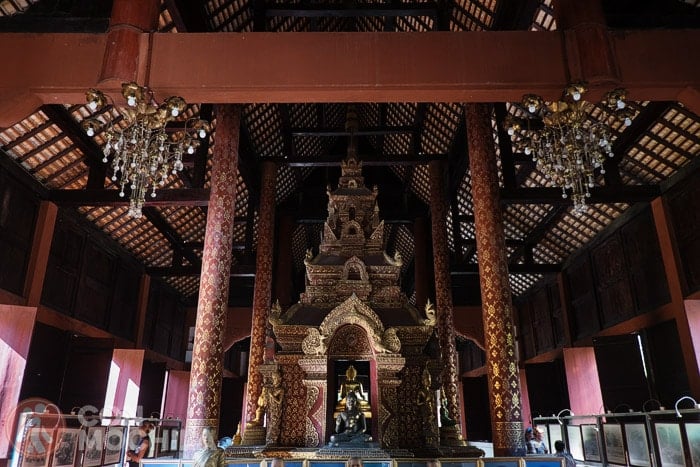
Surrounding the interior of the Wat Phra Singh compound are the kutis, and at the back, just beyond the garden, you’ll find a hall housing a large reclining Buddha statue.
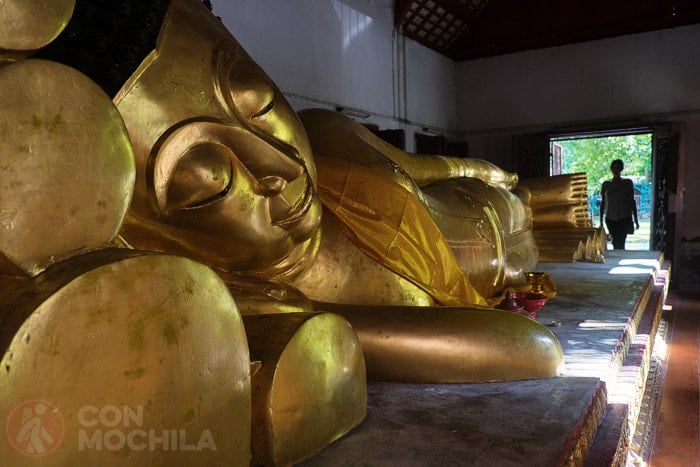
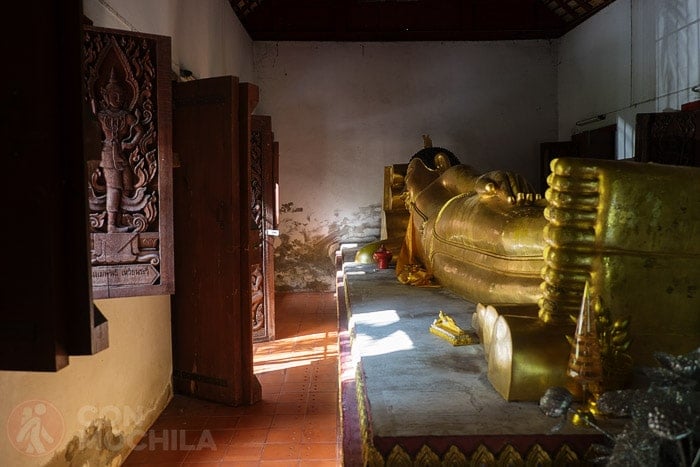
If you’re staying in Chiang Mai’s old city center, you can easily walk to the temple and explore it on your own. But if you’d like to visit this and other temples in a full day, we recommend the 3 Hour Old City and Temples Guided Walking Tour.
ACTIVE CAMPAIGN !
Until december 1st, you can get an automatic 15% discount on your Heymondo travel insurance.